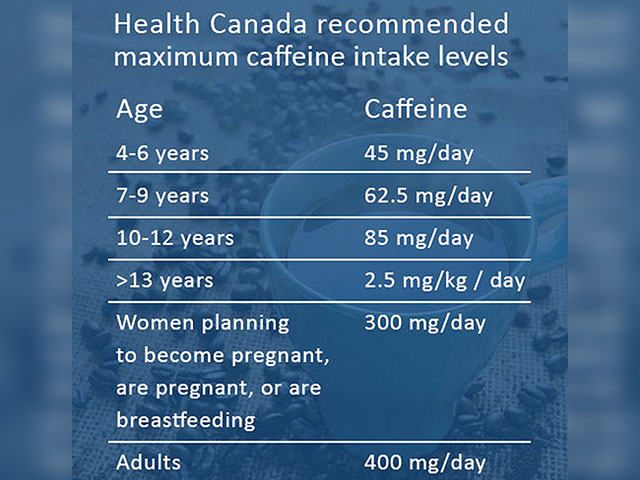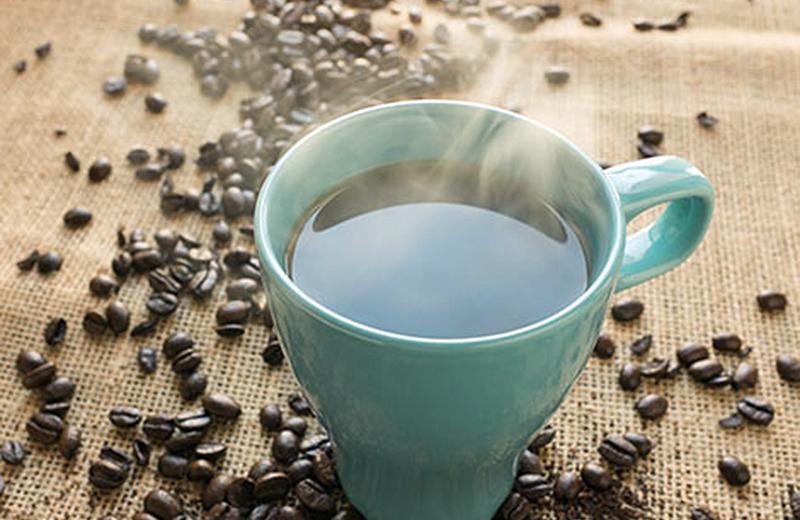Let's talk coffee!
In February, people across Canada are buying coffee in droves in the hope of winning the 1 in 6 prizes posted in every Tim Hortons for their “Roll up the Rim” contest. I have to admit, I haven't made the posted odds – I average 1 in 10 when it comes to wins!
The idea of buying coffee to win coffee inspired me for this Foodie Friday blog: let's talk coffee! Or, more nutritionally relevant, caffeine. Today, I'll explore what caffeine does in the body, how much we can have in a day, and what steps we can take to help reduce the daily amount of caffeine we consume.
Caffeine is a mild stimulant
Like most individuals, I wake up in the morning and without even thinking, I've added water to the coffee machine and am carefully measuring out the number of scoops to make the perfect pot of coffee. After the first sip, I am sighing with relief knowing that I will make it through the day.
I began to question what it is about coffee that "pumps" me up for the day. After a little digging, I discovered, not surprisingly, that caffeine is a mild stimulant. It helps delay drowsiness and speeds up reaction time. But why?
Well, it blocks an important neurotransmitter in the brain, adenosine, responsible for slowing down nerve impulses. Imagine Highway 16 free of traffic lights, construction and roadblocks and you have the effects of caffeine on your brain. This may sound like utopia; however, like our cars on the highway, our brains also need moments to slow down. How else do you expect to turn left on the highway or calm down enough at night to fall asleep?
How much caffeine is safe?
This brings me to the next question: how much? Health Canada suggests that adults limit our caffeine intake to no more than 400 mg/day. Initially, this sounds like I have plenty of room to play with, but as you look into how much caffeine is in what we eat and drink, you quickly learn that 400 mg/day translates to approximately 3 cups of brewed coffee. And this part is important: I'm not talking about three Ventis from Starbucks or three extra large coffees from Tim Hortons – both of which are 4 cups of brewed coffee each – rather, the limit is three 250 ml (the equivalent to 1 metric cup) cups of coffee per day.

Once I processed these recommendations, I quickly measured my cup at home and discovered it holds two cups (500 ml) alone! And this was only my first "cup" of coffee of the day! I typically drive through Tims on my way to work and grab another medium coffee for the commute – almost another two metric cups. No wonder I have the jitters when I get to work! It's likely not from the traffic but the effect of too much coffee! Other symptoms of too much caffeine can include insomnia, headaches and irritability.
Other dopamine-releasing foods
Did I forget to mention that caffeine also increases the brain's dopamine levels? Translated, this is the brain's happy feeling chemical. As a dietitian, this sparked another interest: are there other foods that increase the brain's dopamine levels so that I arrive at work happy without needing coffee? I uncovered that, of course, there are!
Some of the most common foods with this property include bananas, milk, proteins, wheat germ, and beets. Well, I'm not going to get too crazy and introduce beets to my morning routine, but I know that I can definitely incorporate more traditional breakfast items such as bananas, milk, protein and wheat germ.
So, my challenge for tomorrow will be switching my morning cup of joe for either half decaf or a cup of tea and opting instead for a slice of whole wheat toast (wheat germ) with peanut butter (protein), a glass of milk and a banana – both my brain and metabolism will thank me!
Let's be honest, though, I will still probably get my morning drive through for the commute – I have to improve my odds of winning!
Dena's coffee-free breakfast challenge
Ingredients:
- Banana
- Milk
- Peanut butter
- Whole wheat toast
Instructions:
- Spread peanut butter on toast.
- Enjoy your dopamine-releasing breakfast alongside a cup of tea or decaf coffee!














Comments